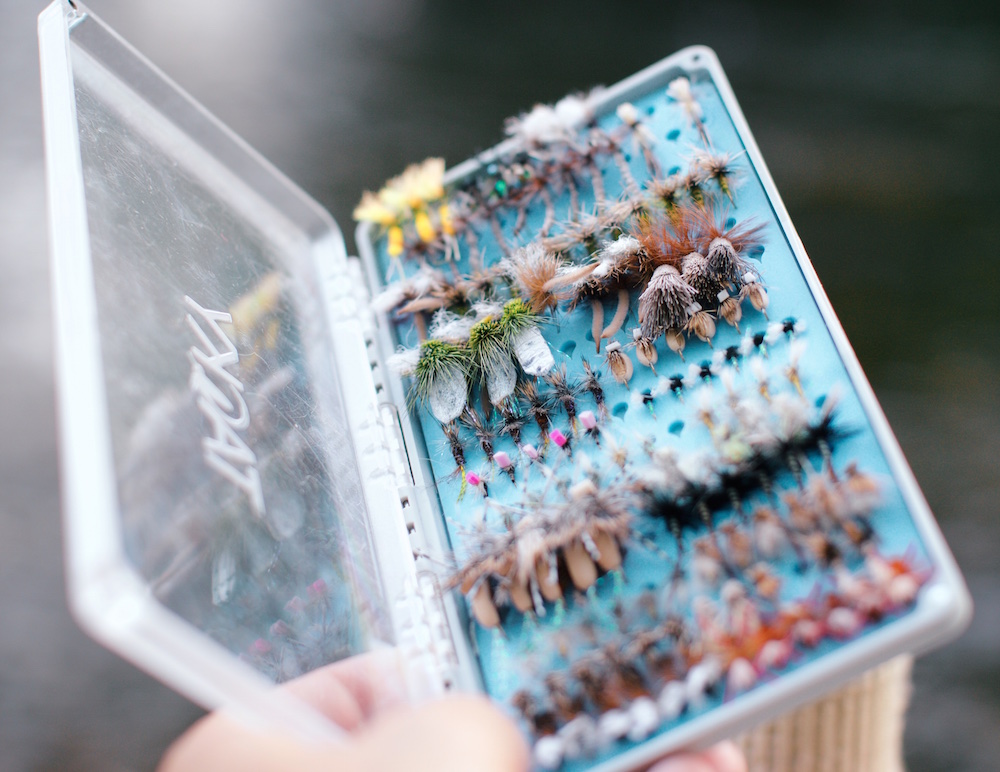One of the secrets in the guiding world is the dropper rig. The tactic that so many fly anglers forget to try, or maybe refuse to try because they think it’s so complicated, can be used in any conditions to fool trout that are acting tight-lipped. It takes a little practice to tie your first dropper rig on the end of your line, but once you get the hang of it, this simple tactic can start producing more fish on any river you fish.
Start With The Basics
Whether you’re fishing flatwater, the local river or on a dream trip in a different country, the basic dropper rig will prove effective at fooling trout on even the toughest days. The basic dropper rig consists of a bushy, buoyant dry fly paired with a sinking or sub-surface fly, usually a wet fly or a nymph.
Start by picking a dry fly that you think would work on it’s own. I like to tie on a Goofball or a fat head moth, something that is beefy enough to hold up any fly I decide to tie on as the dropper (they’re also just way easier to see). When tying on the fly to my leader make sure to leave about a foot and a half of tag end that you’ll use to tie on your dropper. If you’re tag end is not pointing down after tying on your dry fly, feed the tag end through the hook eye and it will be pointing downwards. Then tie on your favorite wet fly or nymph, like a Cat Bug or Invicta, whichever you think will be most effective, and hang on for the strike.

Why The Dropper Rig Works
Much like offering two meal choices at a wedding, the dropper rig is designed to please nearly every trout in the river (there’s always that annoyingly picky vegan that won’t eat anything, you can’t help that). Presenting two different flies in two different places in the water column helps you identify where the trout are looking for forage.
Once you’ve caught a few fish and start seeing a pattern, the trout are always hitting the dry fly, or always hitting the nymph, cut off your dropper rig and start fishing only the successful fly to make for easier casts and drifts. Or you can keep fishing the dropper rig and keep catching fish. If the dropper rig is getting refusals, try swapping out smaller, more subtle flies or lengthening the distance between the two flies.

Go Crazy With It
Once you learn to tie on a dropper rig you can start experimenting with different flies, different leader lengths and different presentations to figure out what works best on your local waters.
Whether you’re trying out a super bushy size 4 dry fly with a tiny size 22 nymph or casting two identical flies like two stimulators, but one soaked to the hook, experimenting will let you develop a pattern and start hooking up more. A dropper rig is a great way to find out what the fish are feeding on and where they’re looking within the water column, so that whether you’ve been at the river 100 times or it’s your first time at a new spot, you can always catch fish.
Tired of getting to the water without the right flies? Subscribe now and become a Postfly Tribe Member.


I just read an article on the Orvis web site, suggesting that it is better to tie a dropper onto the eye of the preceding fly rather than the bend of the hook.
In the comments, people complained about how it can be difficult to get tippet through the eye when there is already a knot there.
Leaving a long tag end, as you suggest, is a great solution.
Never would have thought of it!